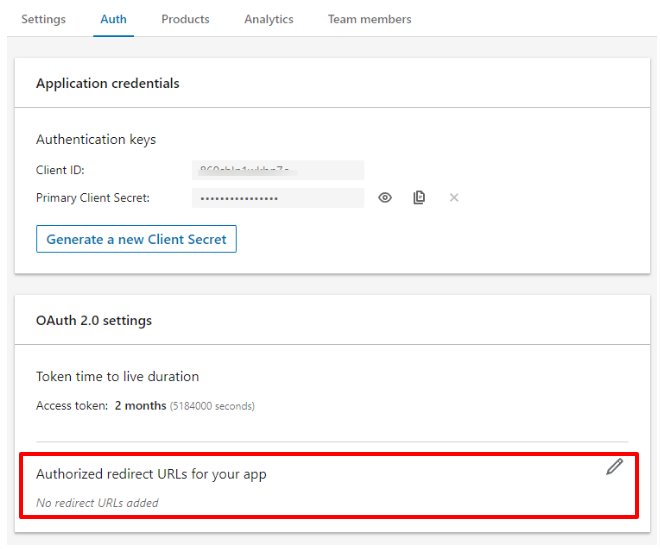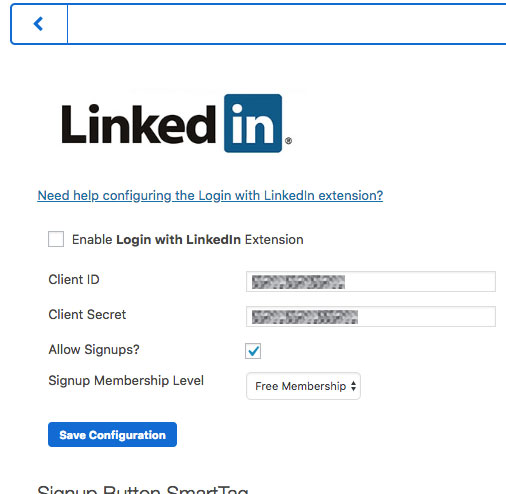The MemberMouse LinkedIn login extension will allow your users to create a new free membership using their LinkedIn login credentials.
Please note that these instructions can require a different order for some or look different than shown. The developer interface changes regularly, and each account may have verification requirements that may not be covered in this article.
Creating a LinkedIn App
The first step to enabling the LinkedIn login extension on your site is to create a LinkedIn App. To create your app, first log in to LinkedIn and follow these steps:
- Access the developers page of LinkedIn: https://www.linkedin.com/developers/apps. Once you are logged in on this page, you will see a button to create an app, or choose one you have already made.
- LinkedIn will prompt you for app details that are publically available, such as the app name, business name, logo, etc. Complete all mandatory fields and click the Create App button.
- While in the Products tab, choose the “Sign In with LinkedIn using OpenID Connect” product.

- If the product successfully gets provisioned to your application, you can progress to the Settings tab and complete any required verification there.
- Once the Settings tab and the Products tab are completed, click the Auth tab to add the Authorized Redirects URL. Be sure to edit the below to contain your site URL.
https://yoursite.com/wp-content/plugins/membermouse/lib/hybridauth/?hauth.done=LinkedIn
- Once you have added the redirect URL, you will see the Client ID and Client Secret there for you to copy from. You will need to enter those in your MemberMouse configuration for LinkedIn.
Configuring the LinkedIn Login Extension
To enable the LinkedIn login extension, follow the steps below:
- In the MemberMouse menu, click on General Settings.
- Next, click on the Extensions tab and from the following page, click on the LinkedIn logo.
- You will need to provide some information from your LinkedIn app, and make a couple of selections:

Client ID – From your LinkedIn app Client ID field.
Client Secret – From your LinkedIn app Client Secret field.
Allow Signups? – If you want to allow new customers to sign up using their LinkedIn login credentials, then click this box. Otherwise, members will only be able to login using their LinkedIn credentials, but not sign up for a new membership. - Click Save Configuration in MemberMouse to save your LinkedIn extension settings.
Adding LinkedIn Signup And Login To Your Site
Once you have configured your site to accept LinkedIn login, you need to add the following SmartTags™ to allow for signup and login.
Signup Button SmartTag™
The following SmartTag™ generates a button that customer's can use to sign up for a new account:[MM_Social_Signup_Button provider='LinkedIn']
Optional Attributes:
membershipLevel – You can optionally use this attribute to override the default signup membership level defined above. It takes a membership level ID for free membership levels only. For example:
[MM_Social_Signup_Button provider='LinkedIn' membershipLevel='2']
Login Button SmartTag™
The following SmartTag™ generates a button that customer's can use to log into an existing account:[MM_Social_Login_Button provider='LinkedIn']
NOTE: You can set the provider attribute to ‘all' to generate signup or login buttons for all active social login providers. So if you have Google and Facebook active, this single SmartTag™ will generate a button for each. For example:[MM_Social_Signup_Button provider='all'][MM_Social_Login_Button provider='all']
 Blog
Blog Podcast
Podcast Support
Support Customer Login
Customer Login




